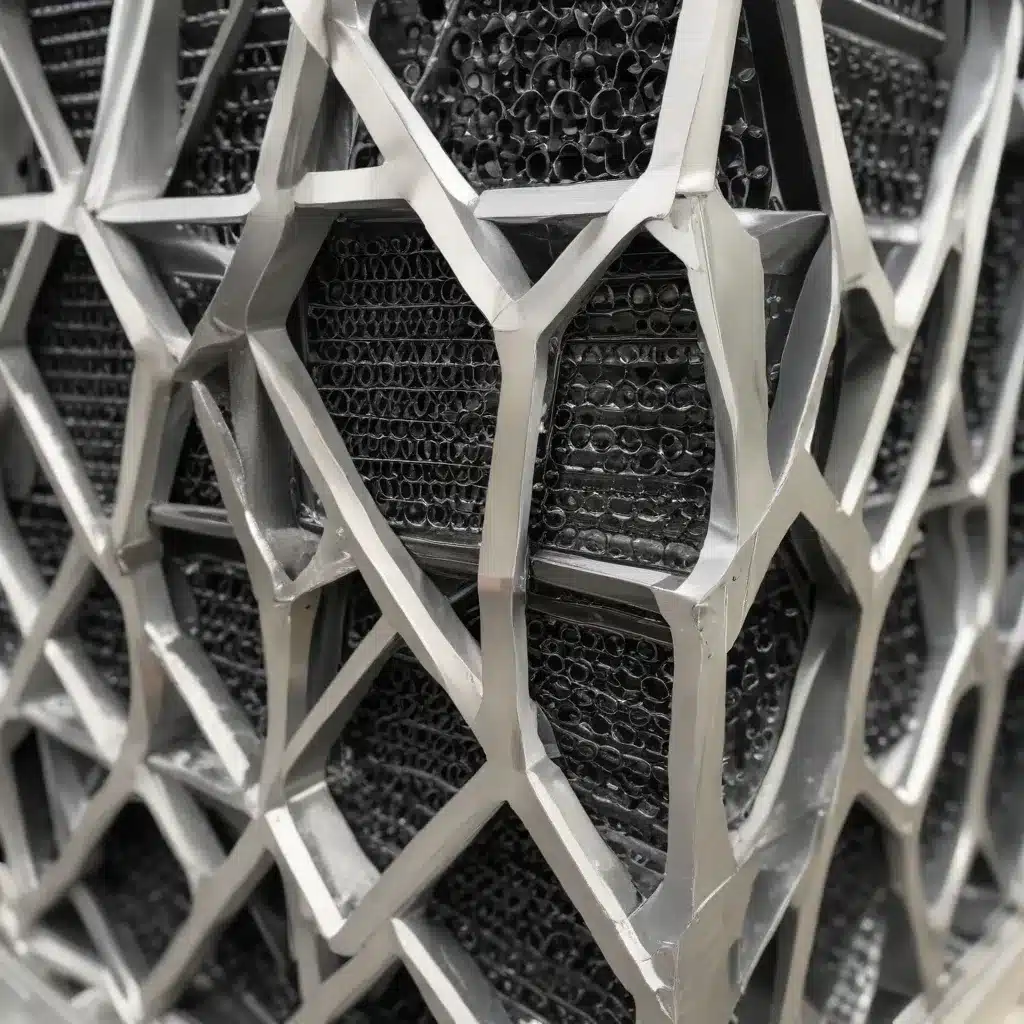
Pushing the Boundaries of Thermal Engineering
Air-cooled heat exchangers have long been the workhorses of countless industries, from power generation and petrochemicals to HVAC systems and beyond. As the demands for efficient, reliable, and cost-effective thermal management solutions continue to grow, engineers and materials scientists are exploring new frontiers to unlock the full potential of these critical components.
At the forefront of this evolution are innovative advancements in materials and coatings that are transforming the way air-cooled heat exchangers are designed, engineered, and maintained. By harnessing the power of cutting-edge technologies, from additive manufacturing to plasma-enhanced surface treatments, the industry is poised to achieve unprecedented levels of thermal performance, corrosion resistance, and operational longevity.
Additive Manufacturing: Unlocking Design Freedom
The rise of additive manufacturing (AM), or 3D printing, has opened up a new world of design possibilities for air-cooled heat exchangers. As the Conflux Technology article highlights, the accuracy and precision achievable with techniques like Laser Powder Bed Fusion (LPBF) allow for the creation of heat exchanger components with intricate geometries and ultra-thin features.
“For high performance heat exchangers, we are always trying to make the walls and fins as thin as possible,” explains Dr. Ian Fordyce, Additive Manufacturing Engineer at Conflux. “The thicknesses we are dealing with are of the same order of magnitude as the particle diameters of the powder and the laser spot size itself. So, an error as small as 10 microns is a massive deal for us.”
By carefully selecting the right metal powders, manufacturers can optimize key properties like strength, thermal conductivity, and corrosion resistance to deliver exceptional heat transfer performance. Materials such as titanium alloys, high-strength stainless steels, and custom copper alloys are emerging as prime candidates for 3D-printed heat exchanger components.
Coatings and Surface Treatments: Enhancing Durability and Efficiency
In addition to innovative material choices, advanced surface coatings and treatments are also playing a pivotal role in improving the performance and longevity of air-cooled heat exchangers. As the Deakin University article highlights, traditional anodization and painting methods often fall short when it comes to protecting complex, geometrically intricate heat exchanger components.
Enter Plasma Electrolytic Oxidation (PEO) and Plasma Electrolytic Nitriding (PEN) – advanced surface treatment processes that can create highly durable, corrosion-resistant oxide and nitride layers on a wide range of aluminum alloys and other metals. These innovative coatings not only safeguard against environmental degradation but can also be precisely tailored to the unique requirements of each application, ensuring optimal heat transfer and minimal flow disruption.
“PEO does not have these drawbacks as it can coat significantly more alloy types with robust, highly dense surfaces, regardless of geometric features,” explains Dr. Milad Laghaei, Associate Research Fellow at Deakin University. “We have advanced the PEO process further by developing new coating electrolytes which contain nitrogen, the basis for our Plasma Electrolytic Nitriding (PEN) technology. PEN has proven to provide even greater corrosion protection than PEO.”
Optimizing Thermal Performance with Advanced Materials
The selection of the right materials, whether through traditional manufacturing or cutting-edge additive techniques, is critical for maximizing the thermal performance of air-cooled heat exchangers. As the NREL article highlights, materials with high strength-to-weight ratios, like titanium alloys, can enable the use of thinner wall thicknesses, thereby improving heat transfer.
“If we can use a higher strength material, then we can have thinner walls which shortens the path for heat transfer and ultimately means a higher performing heat exchanger,” says Dr. Fordyce.
Conversely, the article notes that while materials like copper have superior thermal conductivity, their increased weight can actually lead to poorer overall heat exchanger performance if the walls need to be thicker to maintain structural integrity.
By carefully balancing material properties, manufacturers can optimize air-cooled heat exchanger designs to achieve the perfect blend of thermal efficiency, durability, and cost-effectiveness.
Emerging Coatings for Corrosion Protection and Fouling Mitigation
Beyond enhancing thermal performance, advanced coatings and surface treatments are also proving invaluable in addressing common operational challenges faced by air-cooled heat exchangers. As the Deakin University article discusses, the development of innovative PEO and PEN processes has unlocked new possibilities for combating corrosion and fouling.
These specialized coatings not only protect against environmental degradation but can also be tailored to mitigate the buildup of scale, deposits, and other contaminants on heat exchanger surfaces. By preventing the accumulation of fouling materials, these advanced treatments help maintain optimal heat transfer efficiency and minimize the need for costly and time-consuming cleaning procedures.
Embracing the Future of Air-Cooled Heat Exchangers
As the industry continues to push the boundaries of what’s possible, the integration of cutting-edge materials, coatings, and manufacturing techniques is poised to revolutionize the air-cooled heat exchanger landscape. By unlocking enhanced thermal performance, improved durability, and streamlined maintenance, these innovations are paving the way for a new generation of high-efficiency, cost-effective thermal management solutions.
Ultimately, the future of air-cooled heat exchangers lies in the hands of those willing to embrace the potential of advanced materials and coatings. By staying at the forefront of these emerging technologies, engineers and designers can unlock unprecedented levels of performance, reliability, and sustainability – transforming the way industries harness the power of thermal energy.
To learn more about the latest advancements in air-cooled heat exchanger technology, be sure to visit https://www.aircooledheatexchangers.net/. Our team of industry experts is dedicated to providing the practical insights and innovative solutions you need to stay ahead of the curve.

